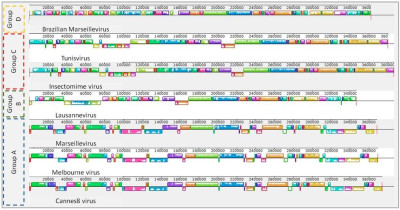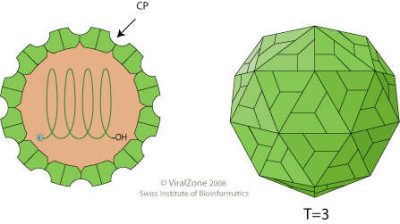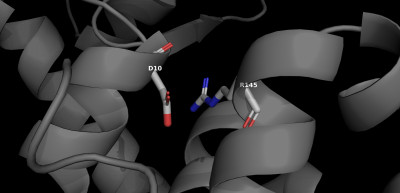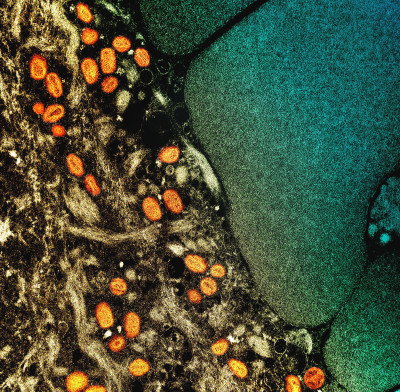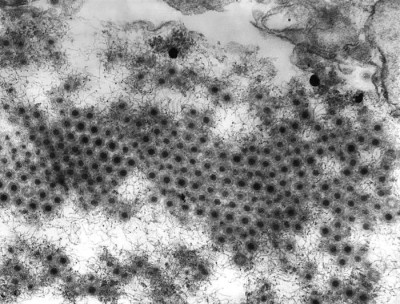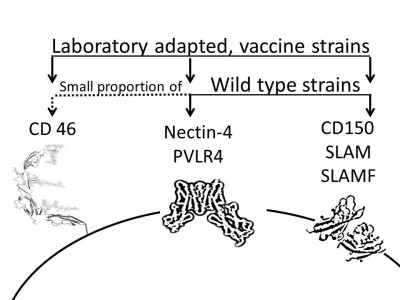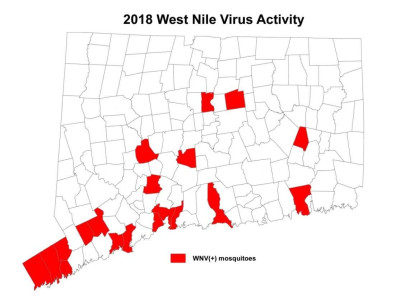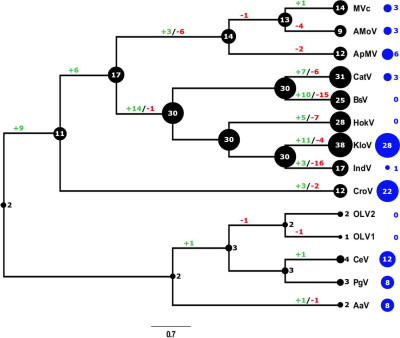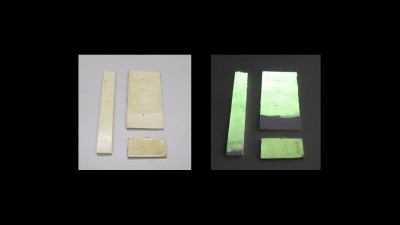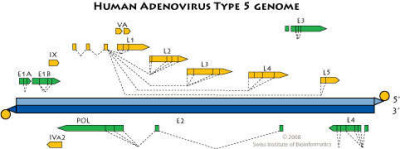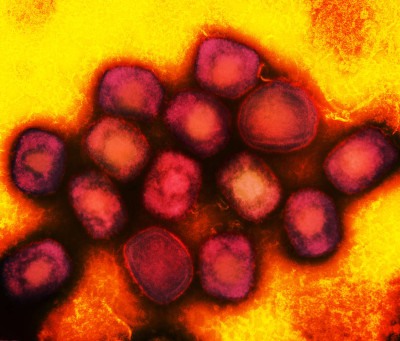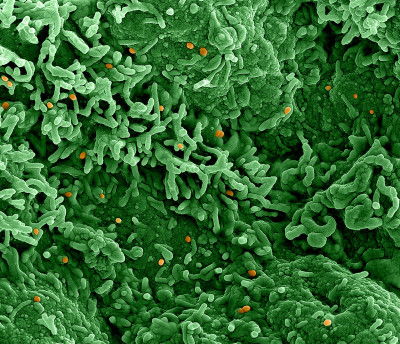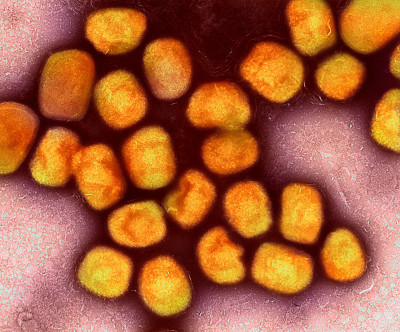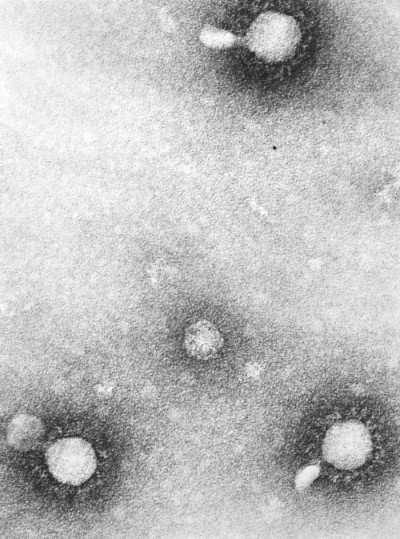Genome alignment of Brazilian Marseillevirus (BrMV) and other marseillevirus strains. The figure shows genome architecture and synteny.[1]
Fábio P. Dornas, Felipe L. Assis, Sarah Aherfi, Thalita Arantes, Jônatas S. Abrahão, Philippe Colson and Bernard La Scola
29 Feb 2024
Schematic drawing of a virion of the family Tymoviridae, cross-section, and external view.
Wikimedia Commons, ViralZone, SIB Swiss Institute of Bioinformatics
02 Apr 2024
The figure presents an attractive ionic interaction between an arginine (R) and an aspartate (D) residue. Attractive ionic interactions are carried out by a positively charged amino acid and a negatively charged amino acid. Generally, they occur when the distance between the atoms at the side chain termini is less than 6 angstroms. The figure was generated using the PyMOL tool (https://pymol.org/2/).
30 Jan 2024
Representative images of neurospheres infected with ZIKVBR (#10608 twins, n = 2 technical replicates). SB, 400 μm.[1]
Wikimedia Commons
07 Feb 2024
Symptom of yellow curl leaf disease in chilli pepper leaves. Klaten, Central Java.
Kembangraps, Wikimedia Commons
01 Mar 2024
Colorized transmission electron micrograph of monkeypox particles (orange) found within an infected cell (brown and green), cultured in the laboratory. Image captured at the NIAID Integrated Research Facility (IRF) in Fort Detrick, Maryland.
Wikimedia Commons, NAID
09 Apr 2024
This negatively-stained transmission electron micrograph (TEM) revealed the presence of numerous Reovirus type-3 virions. This virus organism is a member of the family, Reoviridae, genera of which include the Coltivirus, i.e., Colorado tick fever, Orbivirus, i.e., bluetongue virus, and Orthoreovius, within which belong these virions.
Public Health Image Library
11 Apr 2024
Genome map of genus Morbillivirus. Negative-stranded RNA linear genome, about 15-16 kb in size. Encodes for eight proteins.
ViralZone, SIB Swiss Institute of Bioinformatics
18 Apr 2024
Genome map of Porcine Circovirus-1. Porcine circovirus (PCV) comprises four single-stranded DNA viruses lacking envelopes, characterized by an unsegmented circular genome.
Wikimedia Commons, ViralZone, SIB Swiss Institute of Bioinformatics
23 Apr 2024
Measles morbillivirus cell entry receptors.
Wikimedia Commons, Matveeva, O.V., Shabalina, S.A
10 May 2024
Thursday, August 2, 2018 -- Governor Dannel P. Malloy and state public health officials are advising Connecticut residents to be aware of a rapid build-up of West Nile virus (WNV) activity within the state as recent tests show that infected mosquitoes are rising at levels higher than normal for this time of year. The Connecticut Agricultural Experiment Station (CAES) has detected WNV-infected mosquitoes in 19 municipalities this year, including Bethany, Bridgeport, Darien, East Haven, Easton, Franklin, Greenwich, Hartford, Madison, Manchester, Meriden, New Canaan, New Haven, Stamford, Stratford, Waterbury, Waterford, West Haven, and Weston.
Wikimedia Commons, Dannel Malloy
10 May 2024
Evolutionary history of translational machinery found in giant viruses inferred by COUNT and abundance of ankyrin repeat-domain genes. The size of the black circles mapped on a cladogram of members of the Mimiviridae represents the number of gene families involved in translation at each node or tip. Blue circles indicate the number of ankyrin repeat-domain encoding genes found in each genome. Gene gain and loss events are depicted along the branches. MVc: Megavirus chilensis, AMoV: Acanthamoeba polyphaga Moumouvirus, ApMV: Acanthamoeba polyphage Mimivirus, CatV: Catovirus, BsV: Bodo saltans virus, HokV: Hokovirus, KloV: Klosneuvirus (KlosnV), IndV: Indivirus, CroV: Cafeteria roenbergensis virus, OLV1: Organic Lake Phycodnavirus 1, OLV2: Organic Lake Phycodnavirus 2, CeV: Chrysochromulina Ericina Virus, PgV: Phaeocystis globosa virus PgV-16T, AaV: Aureococcus anophagefferens virus. [1]
Wikimedia Commons
10 May 2024
Optically transparent polymeric coatings characterized by very intensive visible fluorescence (green light emission) under exposition to ultraviolet light can be made by embedding CdS quantum-dots in polystyrene. Such polymeric nanocomposites can be exploited for different technological applications in the area of photonics like, for example, authentication, anti-counterfeiting and anti-camouflage. These optically transparent/fluorescent nanocomposite materials have been prepared by thermal decomposition of cadmium dodecyl-thiolate (i.e., Cd(SC12H25)2) dissolved in a molten optical plastic (amorphous polystyrene) at 250°C [1].
12 Jul 2024
Flexibacter (fleck-see-back-ter) - a bacterium isolated from a marine sediment. Benthic ecosystems in marine and many other sediments is one which has a spectacular range of chemical conditions - from an oxic habitat at the surface to an anoxic, sulphide and acidic habitat in deeper regions. The oxygen rich layer penetrates deeper into sediments during the day or when sediments are exposed to the air (photosynthesis and access to the atmosphere provide a supply of oxygen), and at night or when the tide comes up the oxygen rich layer recedes. Most organisms seem to occur only in a narrow band within the habitats, and so must be able to move with the changing chemistry of the habitat changes. Many bacteria - such as the ones illustrated here - are filamentous and flexible and can migrate through the sediments.
David Patterson, Linda Amaral Zettler and Virginia Edgcomb, micro*scope
22 Jul 2024
Genome map of the species Human Mastadenovirus C (serotype 5).
ViralZone, SIB Swiss Institute of Bioinformatics
18 Apr 2024
Colorized transmission electron micrograph of monkeypox virus particles (red) cultivated and purified from cell culture. Image captured at the NIAID Integrated Research Facility (IRF) in Fort Detrick, Maryland.
Wikimedia Commons, NAID
08 Apr 2024
Colorized scanning electron micrograph of monkeypox virus (orange) on the surface of infected VERO E6 cells (green). Image captured at the NIAID Integrated Research Facility (IRF) in Fort Detrick, Maryland. Credit: NIAID.
Wikimedia Commons, NAID
09 Apr 2024
Colorized transmission electron micrograph of monkeypox virus particles (gold) cultivated and purified from cell culture. Image captured at the NIAID Integrated Research Facility (IRF) in Fort Detrick, Maryland.
Wikimedia Commons, NAID
09 Apr 2024
This negatively-stained 1975 transmission electron micrograph (TEM) revealed the presence of a number of Venezuelan equine encephalitis (VEE) virus virions in this tissue specimen, which had additionaly been fixed using phosphotungstic acid (PTA). This chemical is very electron-dense, and due to proposed electrostatic forces of attraction, clings to the capsid surface of each viral particle or virion, thereby, highlighting the presence of such pathogens. VEE is a Togaviridae family member, and a member of the genus Alphavirus.
Public Health Image Library
11 Apr 2024
Genome organization and characteristics of Sclerotinia sclerotiorum negative-stranded RNA virus 1. The position of each ORF is indicated above the negative-sense strand. The ORFs putatively encode six proteins: pI, NP (nucleoprotein), pIII, pIV, L (RdRP, RNA-directed RNA polymerase) and pVI.
Dàohóng Jiāng, María A. Ayllón, Shin-Yi L. Marzano3, and ICTV Report Consortium
18 Apr 2024
 Encyclopedia
Encyclopedia
